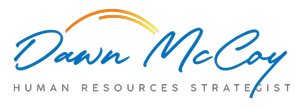A few weeks ago I connected with a person on LinkedIn who was recommended as a great connection in a webinar I was taking. I sent a personal invitation explaining why I was asking him to connect. He accepted my invitation but replied with “Lots of initials…”. I was intrigued and interested in his point of view, so I asked him what his thoughts were on initials displayed behind your name. He proceeded to tell me it was pure vanity and that I was just trying to hide my lack of experience by putting a bunch of meaningless initials behind my name. Ouch!
While his response was pretty offsetting, it did lead me to start thinking more about the practice of including academic and professional designations in signature blocks and headings. I thought about why we put our credentials out there. Is it for our own vanity as this fellow claimed? Do we hide a lack of expertise behind our credentials? Or… as I suggested to him, is it to show we meet the professional standards and ethical guidelines that professional associations require of their members?
If a potential coaching customer, for example, were to see that I am an accredited coach (ACC) with the International Coaching Federation (ICF), would that matter to them? It means that I am fully trained, experienced with a minimum number of hours, required to keep up my professional development and, more importantly, that I am bound to a strong code of ethics related to confidentiality and professionalism with my clients. The same applies to other professional designations including P.Eng, C.Mgr, CMC, CPHR and many others.
A professional designation is what you receive once you have met the requirements to become a member of a professional association. Most often, these associations set the standards for their industries and having the designation means you have met these standards. There is generally a code of conduct that each member agrees to adhere to, a continuing education requirement and resources to help each member stay on top of developments in their field.
The C.Mgr designation for example, is defined on the https://www.cim.ca/mba/chartered-manager-designation website as “the highest internationally recognized designation in management and leadership. C.Mgr. combines rigorous business education with professional-level experience, setting you apart to contribute to Canada’s economic success. A Chartered Manager is someone who has developed various competencies in: Leadership, Strategy, Finance, Accounting, Management Operations and Organizational Analysis.” This means when you are working with someone who has this designation, you KNOW they have met the professional requirements and adhere to the code of ethics and standards of practice of their association.
So, back to my original question… should professional designations be included in signatures/headings such as your title block on LinkedIn? Or as my ex-contact suggested, are they pure vanity? As you can see, I still have mine in my own title, so I guess my opinion is pretty obvious. I would be really interested in hearing what other people think though. Let me know in the comments box.
NOTE: I should also point out that previous to this conversation, I had also included MBA in my signature block, but after examining the whole issue in more depth, I concluded that my MBA was an academic achievement, and while it is a great starting block, my professional designations speak more to my abilities and skills. So, I did remove it, but if I were just starting out in my career and had no professional memberships yet, I would leave it in. Academic credentials do show a level of achievement that can be important when looking for a new job or show a specialization.






